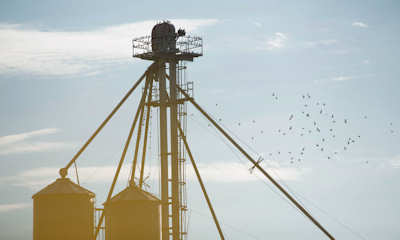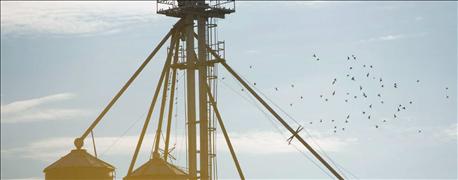October 24, 2015

Sponsored Content
Given crop prices and production costs projected by the USDA for 2016, it appears many corn, soybean and wheat farmers will be operating at a cash flow deficit, or what is called cash burn. Because we’re coming off several prosperous years, cash burn rates haven’t been top of mind in quite some time. However, understanding cash burn or cash build rates is important, as they indicate if you’ll enter the coming year in a position of strength or a position of challenge.
 Financial liquidity can help you weather low grain prices — while minimizing the burn.
Financial liquidity can help you weather low grain prices — while minimizing the burn.
In our work with farmer customers, we’ve identified areas where they can minimize the impact of cash burn. By understanding fixed costs, outlining an approach to liquidity, and utilizing financial tools to better manage risk, you can put yourself in position to reduce the impact of low grain prices in the coming year.
Control fixed costs
Fixed costs include land, buildings, equipment, employees, family living expenses and taxes. These must be paid whether you put in a crop or not. After looking at thousands of customers’ financial data, we see a lot of variance in farmers’ fixed costs. And fixed costs are a determining factor in whether the farming operation is in a cash burn or cash build mode. In fact, fixed costs are typically the one variable that separates high-cost and low-cost producers. In this environment, it is especially important to be a low-cost producer. Recent actions taken by customers to manage fixed costs include:
 * Terminating leases on marginal-producing rental acres
* Terminating leases on marginal-producing rental acres
* Renegotiating rental rates with landlords
* Critically analyzing any opportunities to buy additional land
* Foregoing equipment purchases that can be delayed
* Selling underutilized or non-critical assets
Rethink liquidity
In recent profitable years, many farmers paid cash for capital assets including equipment and real estate. Or they made very large down payments and/or financed the balance on shorter than normal loan repayment terms. Those decisions appeared wise at the time but may now place additional strain on cash flow and liquidity.
Although a five to ten year loan may have looked like a good way to finance a real estate purchase when grain prices were much higher, now those large loan payments in a low grain price environment create a real challenge for cash flow. We’re encouraging farmers to make sure their loan structure and terms are right for today’s environment and their situation. Stretching loan terms out from five or ten years to a more typical 20-year amortization reduces the annual cash flow requirement.
Line up financing now
One crucial tool for providing liquidity is an operating line of credit. We’ve seen less demand for operating lines in recent years due to historically high net farm income reducing farmers’ need for a line of credit. But that has also changed. And as soon as harvest wraps up, it’s important to begin thinking about securing an operating line of credit for 2016. The earlier those discussions start with your lender the better, as the additional time will help you and your lender better understand your needs in 2016 and beyond.
Farm Credit is committed to being a reliable source of credit for customers in any economy. We advise you to always make borrowing and buying decisions based not only on opportunities but also business need.
Read more on trends affecting ag finance.
You May Also Like




